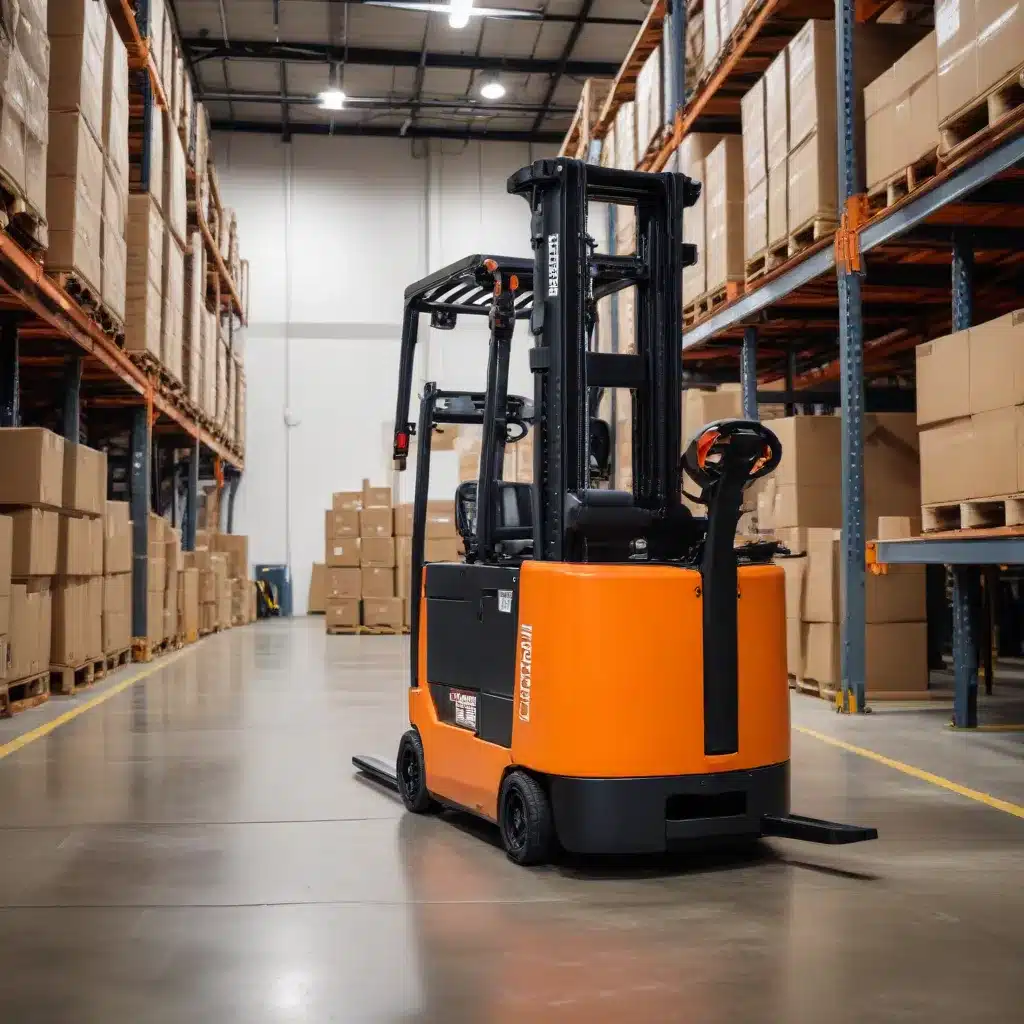
As a seasoned industry expert in forklifts, warehousing, and logistics, I’m excited to share insights on the transformative potential of electric forklifts. In an era where sustainability and efficiency are paramount, these innovative machines are poised to revolutionize material handling operations, delivering a trifecta of benefits: enhanced performance, reduced environmental impact, and significant cost savings.
The Rise of Hydrostatic Drive Systems
Traditionally, internal combustion (IC) forklifts have been the workhorse of warehouses and distribution centers, providing the power and durability required to meet the demands of various industries. However, these machines often struggle with less-than-ideal performance characteristics, such as jerky movements, slower acceleration, and higher fuel consumption, due to their mechanical transmission systems.
Enter the technological advancement of hydrostatic drive systems, pioneered by industry leaders like Linde. By replacing the traditional mechanical transmission with a hydraulic system, hydrostatic forklifts offer a dramatically smoother, more efficient, and often more environmentally friendly operation.
At the heart of a hydrostatic forklift lies a hydraulic pump that converts engine power into hydraulic pressure. This pressurized fluid is then directed to hydraulic motors at the drive wheels, allowing the operator to precisely adjust the speed and direction of the forklift with minimal effort. This enhanced control and maneuverability translate into improved navigability through tight spaces, enhanced load handling accuracy, and a reduced risk of accidents and equipment damage.
Benefits of Hydrostatic Forklifts
The seamless transition between acceleration, deceleration, and braking provided by hydrostatic drive systems creates a comfortable and controlled driving experience for operators. This smooth operation not only enhances productivity but also contributes to a safer work environment by minimizing the risk of work-stopping incidents.
Moreover, hydrostatic forklifts are renowned for their fuel efficiency, as the elimination of power losses associated with traditional transmissions results in significantly lower fuel consumption compared to their IC counterparts. This substantial reduction in fuel expenses can have a meaningful impact on the total cost of ownership, further bolstering the appeal of these advanced machines.
Electrifying the Future of Forklifts
While hydrostatic drive systems have significantly improved the performance and efficiency of internal combustion forklifts, the industry is now witnessing a remarkable shift towards electric power solutions. As environmental concerns and the push for sustainability continue to gain momentum, electric forklifts are emerging as the forefront of material handling innovation.
The Evolution of Electric Forklift Capabilities
The early days of electric vehicles, including forklifts, were hindered by limited battery technology and charging infrastructure. However, recent advancements in battery chemistries, such as lithium-ion (Li-ion) and lithium iron phosphate (LFP), have significantly enhanced the power, efficiency, and longevity of electric forklift batteries.
Additionally, the development of rapid and opportunity charging technologies has transformed the way electric forklifts are powered and maintained. Rapid charging enables batteries to be recharged from 20% to 80% in as little as two hours, while opportunity charging allows for intermittent top-ups during breaks and downtime, ensuring continuous operation throughout the workday.
Environmental and Cost Benefits of Electric Forklifts
The transition to electric forklifts offers a multitude of benefits beyond just improved performance. These machines are inherently more environmentally friendly, with zero direct emissions and significantly reduced noise levels, creating a more pleasant and safer work environment for employees.
Furthermore, the reduced maintenance requirements and lower energy costs associated with electric forklifts can lead to substantial long-term cost savings. By eliminating the need for regular oil changes, engine tune-ups, and other combustion-related maintenance, businesses can streamline their forklift operations and focus on core productivity-enhancing activities.
Embracing the Warehouse of Tomorrow
As the material handling industry continues to evolve, electric forklifts, supported by innovative drive systems and charging technologies, are poised to become the backbone of the warehouse of tomorrow. These advanced machines offer a compelling value proposition, combining enhanced performance, environmental sustainability, and significant cost savings.
For businesses seeking to future-proof their operations, exploring the capabilities of electric forklifts is a strategic imperative. By partnering with industry-leading forklift providers, such as Forklift Reviews, you can gain access to the latest innovations, expert guidance, and tailored solutions to meet your unique material handling needs.
Embracing the power and versatility of electric forklifts will not only elevate your operational efficiency but also position your organization as a sustainability leader in your industry. As we collectively strive to build a greener, more cost-effective future, the warehouse of tomorrow is poised to be powered by the quiet, clean, and cost-effective revolution of electric forklifts.
Key Takeaways
- Hydrostatic drive systems offer a significant improvement in forklift performance, providing smoother operation, enhanced control, and greater fuel efficiency compared to traditional internal combustion models.
- The evolution of battery technologies, such as lithium-ion and lithium iron phosphate, combined with advancements in rapid and opportunity charging, have transformed the capabilities and viability of electric forklifts.
- Electric forklifts deliver substantial environmental benefits, including zero direct emissions and reduced noise levels, creating a healthier and more productive work environment.
- The long-term cost savings associated with electric forklifts, such as lower maintenance requirements and energy costs, can have a significant impact on the total cost of ownership.
- Partnering with industry experts, like Forklift Reviews, can help businesses navigate the evolving forklift landscape and identify the optimal solutions to power their warehouse of tomorrow.
As the material handling industry continues to evolve, the integration of hydrostatic and electric forklift technologies will undoubtedly shape the future of warehousing and logistics. By embracing these advancements, businesses can unlock unprecedented levels of efficiency, sustainability, and cost savings, positioning themselves for long-term success in the dynamic world of material handling.

